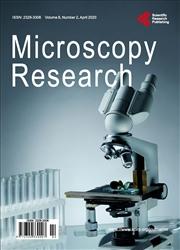Field Evaluation of LED Fluorescence Microscopy for Demonstration of Trypanosoma brucei rhodesiense in Patient Blood
引用次数: 1
Abstract
Diagnosis of Trypanosoma brucei rhodesiense human African trypanosomiasis requires demonstration of parasites in body fluids by microscopy. The microscopy methods that are routinely used are difficult to deploy in resource-limited settings due to practical challenges, including lengthy and tedious procedures, and the need for specific equipment to centrifuge samples in glass capillary tubes. We report here on a study that was conducted in a rural region of eastern Uganda to evaluate new methods that take advantage of a field-deployable LED fluorescence microscope. Examination of acridine orange-stained blood smears by LED fluorescence microscopy resulted in a diagnostic accuracy that was similar to that of routine methods, while the time needed to identify parasites was shortened significantly. These findings make these new microscopy methods attractive alternatives to procedures that are currently used for diagnosis of T. b. rhodesiense human African trypanosomiasis.LED荧光显微镜对患者血液中布氏锥虫的现场评价
诊断布氏罗得西亚人类非洲锥虫病需要通过显微镜检查证明体液中有寄生虫。常规使用的显微镜方法很难在资源有限的环境中部署,因为实际的挑战,包括冗长和繁琐的程序,以及需要特定的设备在玻璃毛细管中对样品进行离心。我们在这里报告在乌干达东部农村地区进行的一项研究,以评估利用可现场部署的LED荧光显微镜的新方法。用LED荧光显微镜检查吖啶橙染色的血涂片的诊断准确性与常规方法相似,而鉴定寄生虫所需的时间大大缩短。这些发现使这些新的显微镜方法成为目前用于诊断布氏罗得西亚锥虫病的有吸引力的替代方法。
本文章由计算机程序翻译,如有差异,请以英文原文为准。
求助全文
约1分钟内获得全文
求助全文

 求助内容:
求助内容: 应助结果提醒方式:
应助结果提醒方式:


